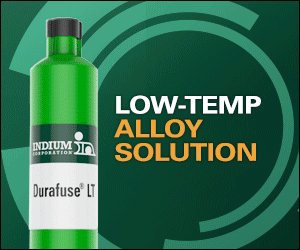Decades-old techniques on cleanliness needs to move from the 70s to 2018 – IPC task group to address the issue
When the coming revised version of IPC 6012-DA will be released in Q2 2018, cleanliness is one of the challenges that will be addressed. A result of increased discussions over the last five years about developing limits for the industry relative to board “cleanliness”.
– The test requirements for cleanliness or Ionic Contamination used today are from the 70ties and don’t fill the demands for today’s printed circuits, as these consist of more advanced technology and requirements than in the 70s, says Chair in IPC 6012-DA task group and Senior Technical Advisor at Elmatica, Jan Pedersen.
A recommendation, not a demand
Improved equipment and new ways to test cleanliness have recently been developed. As soon as the methods have been thoroughly tested, they can be implemented as a demand in IPC 6012-DA, and then further on to similar addendums.
– The “cleanliness” methods have not kept pace with technology, both from a board design sense, but also from a materials sense. I will give you an example. There are two tests for which limits are often discussed. Those two tests include the ROSE test and Ion Chromatography (IC). The primary solvent used for both tests is a mixture of 75% 2-propanol and 25% high purity deionized water. This solvent has been the staple since the early 1970’s. It predates my existence. That all said, the industry has its work cut out for bringing the methods up to speed with current technology, says President at Precision Analytical Laboratory, Inc, Joe Russeau.
The task group for 6012-DA will keep up the tight communication with the IPC task group for cleanliness and continue to monitor the development and progress of methods and test machinery.
– We have internally in the group, decided that the methods for testing are so promising, that we already will implement them in the revised addendum, as a recommendation, not a demand, says Pedersen.
Move away from decades-old techniques
Russeau at PAL believes that, as the industry drives to reduce board real estate and increase population density, the resulting cleanliness issues are likely going to change how to test and how to deal with the issues that arise.
– The biggest challenge, in my opinion, is moving the industry away from decades-old techniques, that have limited application and developing better more accurate approaches to keep pace with technology development and demands. All focus on cleanliness and further development of the methods to test this, is a step in the right direction, says Russeau.
IPC 6012-DA task group will meet at APEX in February to discuss the last changes before they revise the addendum from April 2016. The revised edition is expected to be released in Q2 2018.










